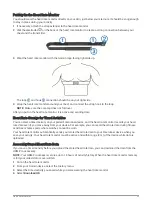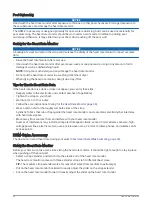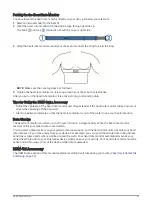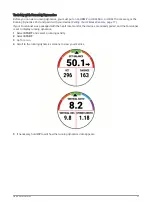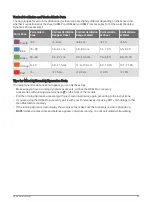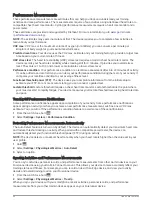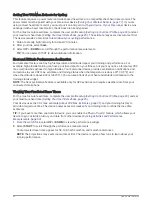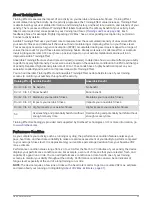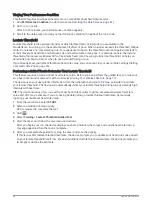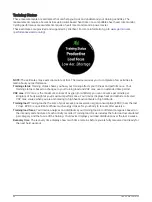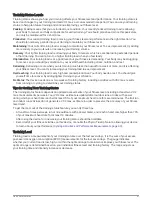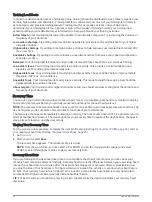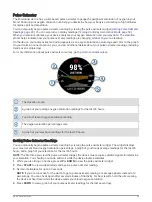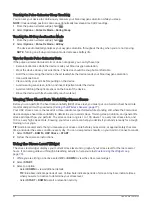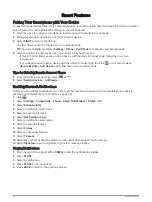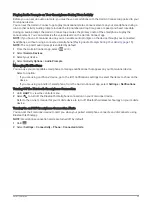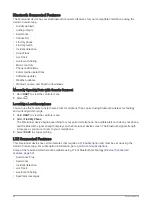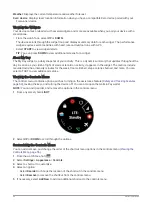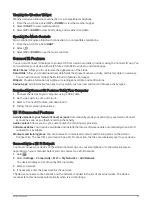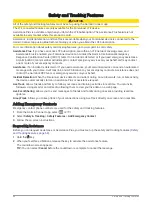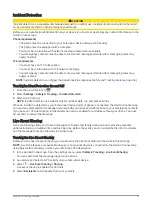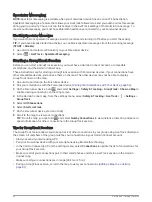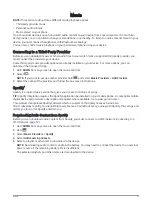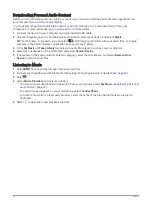
Training Status Levels
Training status shows you how your training affects your fitness level and performance. Your training status is
based on changes to your training load and VO2 max. over an extended time period. You can use your training
status to help plan future training and continue improving your fitness level.
Peaking: Peaking means that you are in ideal race condition. Your recently reduced training load is allowing
your body to recover and fully compensate for earlier training. You should plan ahead, since this peak state
can only be maintained for a short time.
Productive: Your current training load is moving your fitness level and performance in the right direction. You
should plan recovery periods into your training to maintain your fitness level.
Maintaining: Your current training load is enough to maintain your fitness level. To see improvement, try adding
more variety to your workouts or increasing your training volume.
Recovery: Your lighter training load is allowing your body to recover, which is essential during extended periods
of hard training. You can return to a higher training load when you feel ready.
Unproductive: Your training load is at a good level, but your fitness is decreasing. Your body may be struggling
to recover, so you should pay attention to your overall health including stress, nutrition, and rest.
Detraining: Detraining occurs when you are training much less than usual for a week or more, and it is affecting
your fitness level. You can try increasing your training load to see improvement.
Overreaching: Your training load is very high and counterproductive. Your body needs a rest. You should give
yourself time to recover by adding lighter training to your schedule.
No Status: The device needs one or two weeks of training history, including activities with VO2 max. results
from running or cycling, to determine your training status.
Tips for Getting Your Training Status
The training status feature depends on updated assessments of your fitness level, including at least two VO2
max. measurements per week. Your VO2 max. estimate is updated after outdoor runs or rides with power
during which your heart rate reached at least 70% of your maximum heart rate for several minutes. The trail run
and indoor run activities do not generate a VO2 max. estimate in order to preserve the accuracy of your fitness
level trend.
To get the most out of the training status feature, you can try these tips.
• At least two times per week, run or ride outdoors with a power meter, and reach a heart rate higher than 70%
of your maximum heart rate for at least 10 minutes.
After using the device for one week, your training status should be available.
• Record all of your fitness activities on this device, or enable the Physio TrueUp feature, allowing your device
to learn about your performance (
Syncing Activities and Performance Measurements, page 40
).
Training Load
Training load is a measurement of your training volume over the last seven days. It is the sum of your excess
post-exercise oxygen consumption (EPOC) measurements for the last seven days. The gauge indicates
whether your current load is low, high, or within the optimal range to maintain or improve your fitness level. The
optimal range is determined based on your individual fitness level and training history. The range adjusts as
your training time and intensity increase or decrease.
Heart Rate Features
47

